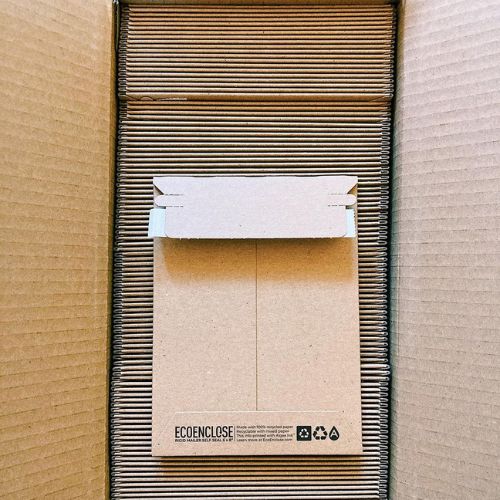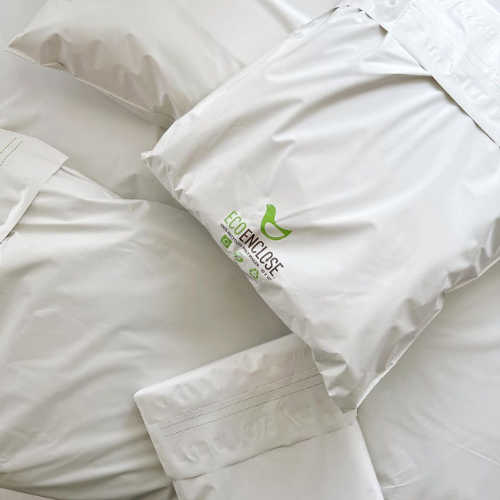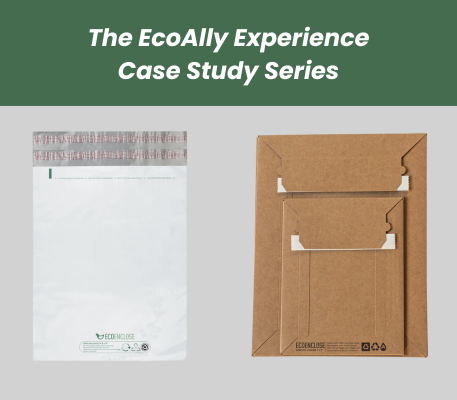Case Study: Balancing Sustainability Goals with Cost Constraints
Posted By on May 2nd 2024
Here at EcoEnclose, we are 100% committed to your sustainable packaging success because we will only achieve our vision of packaging circularity if your eco-packaging project is a win. But what does packaging success mean?
When you work with us, you get a packaging partner dedicated to your access across 5 key areas.
This is the EcoAlly Experience, delivered.

In this series, we explore different parts of the EcoAlly Experience through case studies to help you understand our work.
We keep the brands anonymous, allowing us to be more honest and explore the specifics of the challenges and solutions we provide. Doing so can provide a clearer picture of how we approach complex issues and work with brands like yours to find the best possible solutions.
How We Brought Brand X More Circular Packaging That Met Their Budget
At EcoEnclose, we want every brand committed to sustainability to adopt eco-friendly packaging solutions that align with their budget and operational needs.
Some businesses, particularly our EcoAllies who have built a brand and competitive edge by placing a high strategic focus on sustainability, can adopt the most circular packaging options possible - 100% recycled content with 95% or more post-consumer waste produced in the USA, certified by third parties and designed for one-time reuse. Others, however, may need help to balance maximum levels of recycled content and domestic manufacturing alongside goals related to cost reduction, lead times, and other internal requirements.
EcoEnclose seeks to help brands across this spectrum make meaningful progress on sustainability, no matter where or how they start.
The Challenge
Brand X came to EcoEnclose six months ago, looking for sustainable packaging for their shipping needs.
At the time, they were using virgin 2.5 mil poly mailers produced in China. They ordered 500,000 mailers at a time across three sizes. These volumes allow us to explore a broad set of material and structural options to meet their needs. When they first reached out, they were focused on moving from poly mailers to paper mailers to go plastic-free.
Exploring Paper Mailers
 As brands move to go plastic-free, many consider replacing their poly mailers with paper alternatives. We’ve helped hundreds of brands make this change successfully, but we’ve also started this process with many brands only to halt midway through due to budgetary or operational issues.
As brands move to go plastic-free, many consider replacing their poly mailers with paper alternatives. We’ve helped hundreds of brands make this change successfully, but we’ve also started this process with many brands only to halt midway through due to budgetary or operational issues.
Early in our discussions with Brand X, we recognized that they were facing economic headwinds that would make any significant increase in packaging costs challenging for them. Given this, we quickly mapped out the likely increases they would see in costs when moving from poly mailers to paper mailers – approximately double the unit cost of their packaging, with an additional 50% increase in their storage and transportation costs. We also sent samples to their fulfillment center for review and testing.
After the Brand X team discussed the cost implications and preliminary durability challenges they saw with paper mailers, they determined that these were impractical solutions for the time being. They would pick this initiative back up when they were on a more solid financial footing internally.
Exploring Circular Poly Mailers
 We then explored more circular poly mailer options.
We then explored more circular poly mailer options.
We explain to the Brand X team that circularity in poly mailers means (according to our sustainable packaging framework) maximizing recycled content, with a specific focus on post-consumer waste, designing for recyclability, and using as little material as possible to achieve their performance goals.
We then worked with them to distill and align their crucial decision criteria:
- Budget across three sizes of mailers: No more than 10% more than their current mailers
- Brand and aesthetic needs: Full bleed, four-color print with a commitment to achieving their brand's iconic magenta color, a critical factor for their marketing team
- Sustainability: As much recycled content as possible without sacrificing the above goals
- Lead times: Longer lead times were acceptable for them if it allowed them to satisfy the above goals successfully
Our Recommended Solution
After several weeks of sampling, testing, and reviewing print performance across several options, we settled on 100% recycled poly mailers manufactured in Asia with over 50% post-consumer waste.
These mailers are 2 mils thick (compared to their previous thickness of 2.5 mils) but still meet their performance and print requirements. After conducting an analysis with them, we also removed the dual seal strip on their original mailer, revealing that only 10% of their poly mailers were returned, suggesting that the dual seal strip feature on their original mailer was not worth the extra cost or material it used.
The new poly mailers for Brand X came in slightly below the cost of their current mailers, allowing them to achieve a circularity win alongside a budget win. By working closely with them to understand their unique needs and challenges, we were able to provide a packaging solution that met all of their specific criteria. However, it meant making tradeoffs on sustainability for the time being.
At EcoEnclose, we see these steps forward among committed brands (grappling with economic and operational challenges alongside their sustainability goals) as wins. Every time a brand makes this type of positive progress, it puts them on a flywheel of forward momentum. It also enables EcoEnclose to expand the community of EcoAllies, which is part of our broader movement to make packaging circular.


